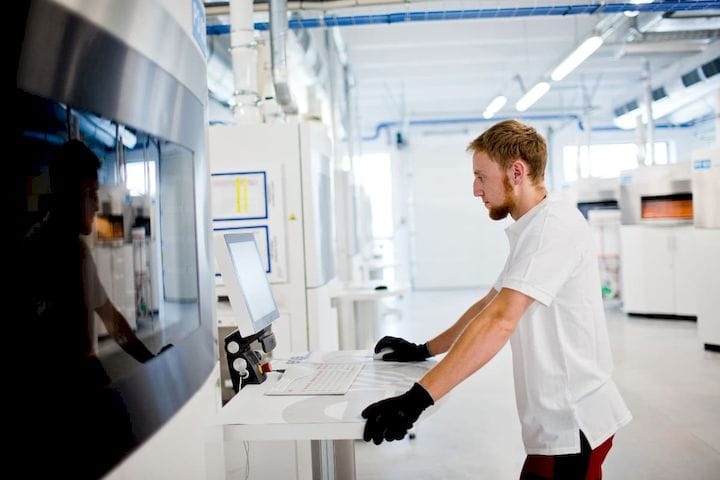![Materialise predicts five 3D printing trends for 2019 [Source: Materialise]](https://fabbaloo.com/wp-content/uploads/2020/05/image-asset_img_5eb0a0bad8696.jpg)
Materialise published a series of trends and we have some thoughts.
Materialise is one of the larger and more notable 3D print services in the industry, and they’re one of the oldest as well. They work with global businesses to help produce 3D prints in many ways, including software and services.
Recently they published a list of five 3D printing trends they’ve observed and expect to continue into 2019. Let’s take a look at them.
1. Applications, not technology, will drive the 3D printing industry forward
They propose:
”The industry was shifting its focus to identifying the right applications for 3D printing, rather than in developing new technologies. In 2019 that tendency will intensify, as the application-driven approach to 3D printing is likely to gain attention from the financial world.”
We believe this has been true for several years and yes, it will intensify. The huge boom in 3D printing interest circa 2010-2014 was largely due to boosterism and misguided marketing related to the notion of consumer 3D printing. While that has evaporated, the rest of the industry is focusing on making the devices perform productive tasks – and that’s what is driven by 3D printing applications.
2. A rise in polymer materials for 3D printing
They propose:
“Last year, we predicted that Metal 3D Printing would get its deserved attention in 2018. This time around, it’s the plastic materials for 3D printing that have been preparing for substantial growth in 2019. Major material manufacturers are playing a big role in this movement.”
We believe this is true. We have observed a massive interest in the space by several major chemical companies including Mitsubishi, SABIC, DSM and, perhaps most notably, BASF. These companies intend on setting a beachhead in a new market (for them) ahead of an anticipated period of growth.
BASF in particular has been ingenious and relentless in their myriad ways of attaching themselves to the 3D printing ecosystem of many companies. They’ve bought companies, have partnered with companies and also supply companies. The others will likely do the same.
But how do they compete? Largely it will be by leveraging their enormous catalogs of thermoplastics that have been developed over decades and are well familiar to many design engineers, who would welcome their appearance as a 3D printing material.
3. Software will be the key to boosting productivity in 3D printing
They propose:
”As industries work on integrating 3D printing into their production mix, their challenges are less about technology and more about economics. The goal is to reduce costs and to increase efficiency.”
We believe that there are still massive barriers to ease of use, some related to design tools and others related to 3D printing operations tools. Both of which must be addressed to truly open up the industry to massive growth in the future.
This has been going on for some time now, with many companies attempting to simplify various aspects of the 3D printing workflow. Obviously, that will continue. But the big question is whether anyone will invent a breakthrough approach that will vastly simplify the entire process.
4. Technology-neutral interconnectivity, not proprietary solutions
They propose:
“For 3D printing to unlock that potential and claim a bigger share of that $12 trillion market, the 3D printing industry needs offer interoperability and technology-neutral solutions. If industrial manufacturers want to be serious about adopting 3D printing as a complementary manufacturing technology for final products, they simply cannot afford to be locked into proprietary solutions that limit their flexibility and choice.”
We agree that this is necessary, but we’re not certain it will happen, as existing companies generally have a tendency to offer increasingly proprietary solutions. MakerBot, for example, just released a new 3D printer that requires proprietary material. All of them are looking for ways to make their products “sticky”, so that once bought, they will provide a revenue stream for years to come.
That tendency will be very hard to overcome. I believe it will take one or two companies to abandon habits and embrace open standards. Once they get business, others will follow.
5. Governments will get more involved
They propose:
“We have seen 3D printing emerge as a discussion point in governmental environments, says Bram Smits, Public Policy Officer at Materialise, and we believe this will increase significantly in 2019. This rise is a signal that 3D printing is gaining importance in society and is freeing itself from the label of a prototyping technology.”
We believe this will be a regional thing. Some jurisdictions have already taken on 3D printing as a strategy to meet growth goals, while others have ignored the technology entirely. In major markets we suspect the majority of activity will be driven by industry and governments will follow.
We can only hope that any regulations devised will be done so intelligently, taking into account the opinions of experts, unlike some rash decisions made in certain countries reacting to non-issues like 3D printed weapons.
Via Materialise











No one seems to offer collaborative 3D printing modes on dual extrusion devices. We explain why this is the case.